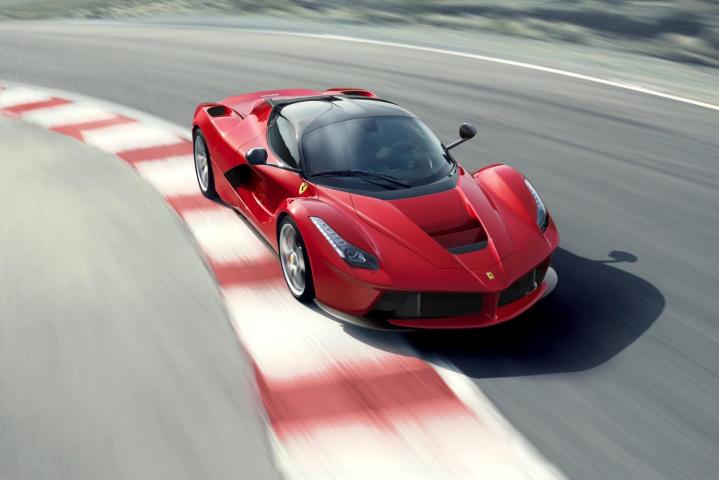
Now it would appear the Italian automaker’s plans for electrically-assisted powertrains have expanded significantly. A patent sketch has been uncovered by Autocar with a how-to layout for future hybrid models. The highlight of this new system is a 30-mile all-electric range and, as with the LaFerrari, dramatically boosted performance.
The model in question uses a front-engine layout, and while Ferrari now has a few such models in its portfolio (F12 Berlinetta, California T, and FF), chances are the production model will be the next generation F12, due sometime before 2020.

As for the technology itself, Ferrari plans to use slimline batteries built into the floor (akin to Tesla’s Model S and Model X) powering an electric motor that is attached to the rear-mounted transmission. This structure would also be adaptable for mid-mounted engines, like the in-process Dino revival due out in the next few years.
While the LaFerrari was the brand’s first production hybrid, its minimal production numbers means whichever model Ferrari equips with hybrid tech next will be its first true “mass production” vehicle.
Part of the reason for Ferrari’s new electric push is not just to comply with general emissions regulations, but with proposed zero-emissions zones in major cities. Both the upcoming Dino and current California T (both on the low end of Ferrari’s model spectrum) would be driven more frequently, and almost certainly in large metropolitan areas. Therefore, offering electric-only capabilities would enable owners to operate their vehicles anywhere.
Ferrari’s greatest challenge to adding electric power to its models is the lack of available space. Traditional batteries built into the floorboards may work for other automakers, where driver and passenger seats don’t need to be mounted as low as possible, but for Ferrari, that characteristic is essential to the driving experience. Instead, Ferrari will apparently use individual cylindrical cells slung together in a single layer and incorporated into the floor. This patent shows a “support matrix” to keep the batteries as compact and thin as possible. In the case of an accident, the batteries will become disconnected from one another.
“The chemical batteries that are displaced [in an impact] automatically disconnect from the electric circuit, thus reducing the risk of short-circuits or electrocution. Therefore, after the crash there are many chemical batteries not connected to one another, thus individually having a moderate electric voltage.”
Another insight from this patent is how Ferrari may build all future models around a common cockpit structure. Instead of a central tub, Ferrari shows front and rear subframes bolted to a transversely-mounted bar (as part of the cockpit). This strategy would be easier to build, would make repairs easier, and would save Ferrari a ton of cash on development.
Hybrids and modular platforms? Sounds like a completely remodeled Ferrari brand is in the works.


